oikos Logos--the study of house
Ecology is Interaction of form , Function and Factor.

Who is Ramdeo Misra ?

Ramdeo Misra
is revered as the Father of Ecology in India. His research laid the foundations for understanding of tropical communities and their succession, environmental responses of plant populations and productivity and nutrient cycling in tropical forest and grassland ecosystems.
4 Level
Ecology is basically concerned with four levels of biological organisation
Types
-
Organismal ecology
Concerned with how individual organisms deal with their physical environment (abiotic environment) Includes: Behavioral adaptations Physiological adaptations Morphological adaptations -
Population ecology
Concerned with groups of individuals of the same species living in the same geographical area Mainly deals with factors that affect: Population size Population composition
-
Community ecology
Community ecology Concerned with all organisms living in a particular area Deals with a variety of different species and their interactions with one another, including: Predation Competition Parasitism Mutation -
Ecosystem ecology
Concerned with the relationships between the organisms in a community and abiotic factors Mainly deals with: The flow of energy through the system The cycling of chemicals
NCERT
Ecology at the organismic level is essentially physiological ecology which tries to understand how different organisms are adapted to their environments in terms of not only survival but also reproduction.
Autecology

Definition:
Autecology is the study of individual organisms. The approach originally focused on the adaptiveness of an organism's physiology to the environment but has since been expanded to include the study of the distribution and dynamics of populations
Synecology
Definition-
The study of relationships among species within communities is known as synecology. Strictly speaking, a community consists of all plant, animal, and microbial populations occurring together on a site.
Synecology The study of homogenous or heterogenous groups of organisms in relation to their environment
-
Population ecology
Study of the dynamics of species populations and how these populations interact with the environment – the study of homogenous groups of organisms related as a single species -
Community ecology
Associated populations of species in a given area – the study of heterogenous groups of organisms comprised of multiple associated species -
Ecosystem ecology
Study of living and non-living components of ecosystems and their interactions
The habitat is the physical environment in which a species lives and to which it is adapted. A habitat’s features are determined mainly by abiotic factors such as temperature and rainfall. These factors also influence the traits of the organisms that live there..
NCERT EXCERPT
Regional and local variations within each biome lead to the formation of a wide variety of habitats. Even our intestine is a unique habitat for hundreds of species of microbes.
Niche from NCERT
Each organism has an invariably defined range of conditions that it can tolerate, diversity in the resources it utilises and a distinct functional role in the ecological system, all these together comprise its niche.
The Ecological Niche Concept
The sum total of an organism's use of the biotic and abiotic resources in an environment. It includes: Space utilization, Food consumption, Temperature range, Moisture requirements, range of tolerance, range of movement, microclimate, type of food and its availability, type of predator and timing of activity.
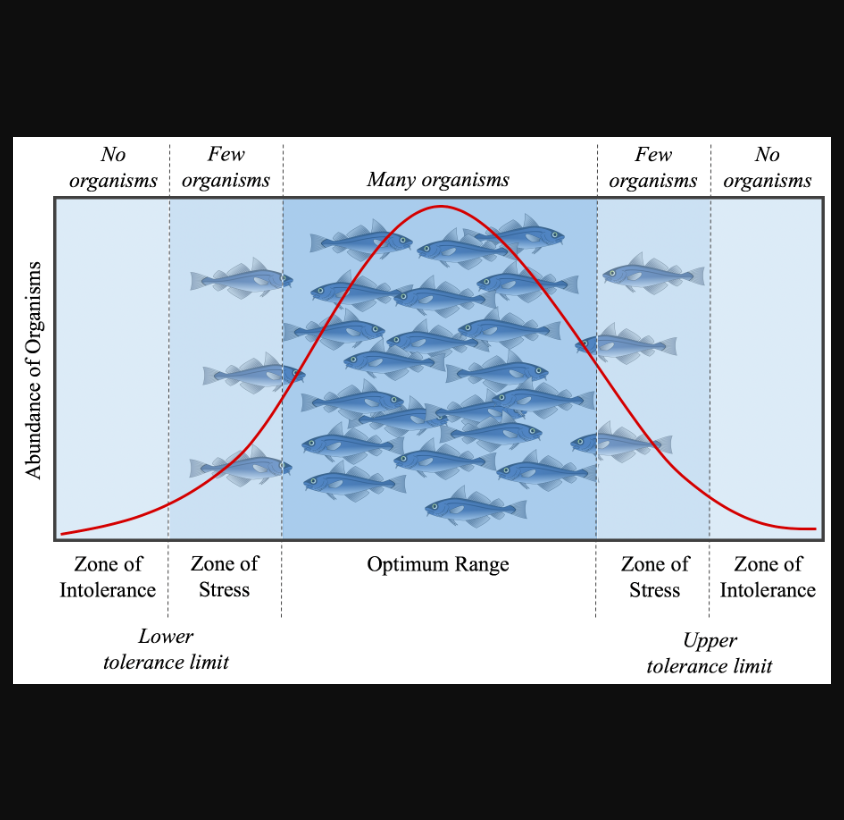
Species’ Ecological niche
is the abiotic and biotic conditions the species requires in order to grow, reproduce, and survive
- Fundamental niche:Every species, therefore, has a fundamental niche, which are the abiotic conditions the species can physiologically tolerate.
Cont...
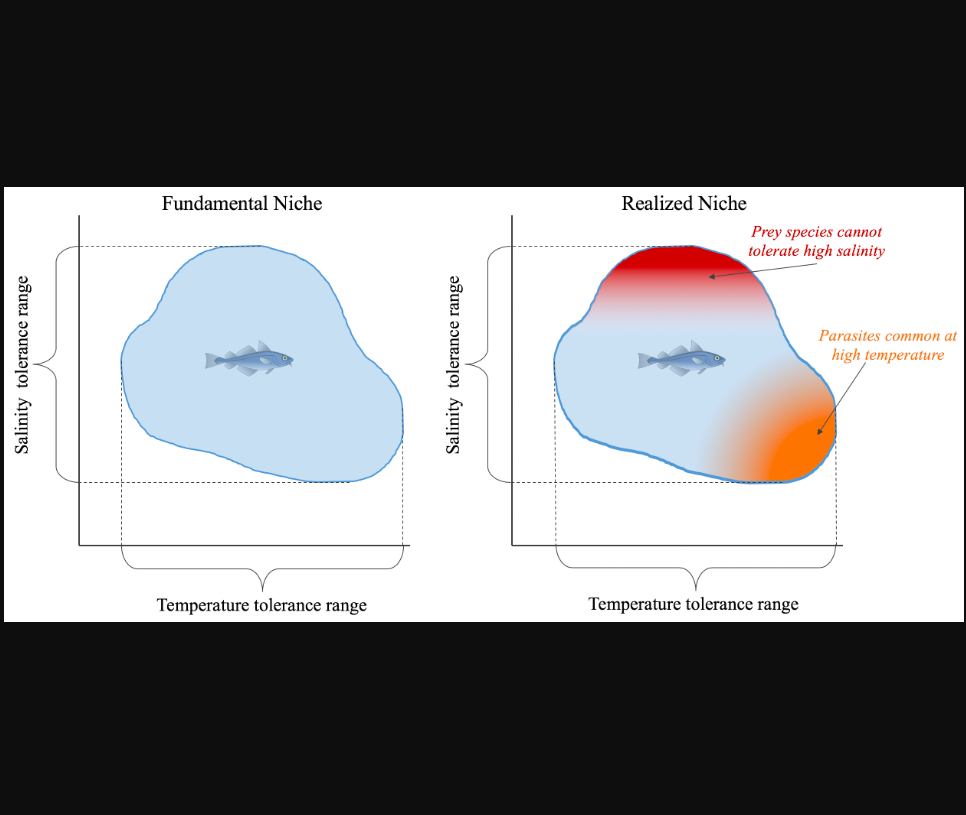
Fundamental Niche Part-2
by siddsir
This species has certain physiological tolerances in temperature, salinity, etc, that determine where the species can exist. Each of the abiotic factors has an optimum range, where the species will be abundant.

Fundamental Niche Part-3
by siddsir
Outside of this optimum range (both above and below it), are zones of stress, where the species can survive, but experiences physiological stress and will be less common than in the optimum range.

Realized Niche part-1
by siddsir
Beyond the zones of stress, are zones of intolerance, which represent conditions the species cannot tolerate and in which it will not be found. The tolerance ranges for all relevant abiotic conditions represent the species fundamental niche. Species interactions such as predation, parasitism, mutualisms, etc may result in this species not being found throughout its entire fundamental niche. For example, if this fish’s prey species do not occur in some areas of the fundamental niche, then this fish species may not occur there even though it could physiologically tolerate these conditions.
Realized Niche
The example above illustrates how a species' realized niche might be reduced or contracted compared to the fundamental niche; however, species interactions can also expand the realized niche.

Key elements that lead to so much variation in the physical and chemical conditions of different habitats?
The most important ones are temperature, water, light and soil..

We must remember that
The physico-chemical (abiotic) components alone do not characterise the habitat of an organism completely; the habitat includes biotic components also – pathogens, parasites, predators and competitors – of the organism with which they interact constantly.
Significance of temperature
In living organisms, it affects the kinetics of enzymes and through it the metabolic activity and other physiological functions of the organism.
Eury- or Steno-
Eurythermal or Stenothermal
A few organisms can tolerate and thrive in a wide range of temperatures (they are called eurythermal), but, a vast majority of them are restricted to a narrow range of temperatures (such organisms are called stenothermal).
Influencing the life of organisms.
Wat.er
Life on earth originated in water and is unsustainable without water.
For aquatic organisms
* * *
The quality (chemical composition, pH) of water becomes important. The salt concentration (measured as salinity in parts per thousand), is less than 5 in inland waters, 30-35 in the sea and > 100 in some hypersaline lagoons. .
Eury- or Steno-
Euryhaline or Stenohaline
Some organisms are tolerant of a wide range of salinities (euryhaline) but others are restricted to a narrow range (stenohaline)..

We must remember that
Organisms (e.g. eurythermal).can be steno with respect to one factor and eury with respect to a different one..

SOIL
The nature and properties of soil in different places vary; it is dependent on the climate, the weathering process, whether soil is transported or sedimentary and how soil development occurred

SOIL
Various characteristics
Soil composition, grain size and aggregation determine the percolation and water holding capacity of the soils. These characteristics along with parameters such as pH, mineral composition and topography determine to a large extent the vegetation in any area. This in turn dictates the type of animals that can be supported.
- Aquatic: In the aquatic environment, the sediment-characteristics often determine the type of benthic animals that can thrive there..
Very Importnat
-
Ectothermic
Most fishes, amphibians, reptiles, and invertebrates are ectothermic, meaning they gain their heat mostly from external sources..
-
Endothermic
Birds and mammals are mainly endothermic, meaning they gain their heat (body temperature) from internal heat production by metabolism.
-
Alert
Biologists avoid the terms cold-blooded and warm-blooded because they are so misleading.
-
Important
- Terms - Ecto and Endotherms relate to the source of body heat, not whether the animals are capable of regulating body temperature..
Very Important
Poikilotherm (poikilo =“varied”) - body temperature approximates the ambient temperature. Not capable of controlling body temperature as ambient temperature varies.
Homeotherm (homeo = “same”) - controls body temperature, keeping it relatively constant as ambient temperature varies.These terms relate to whether or not the animal is capable of controlling body temperature.

Regulators v/s Conformers
Conformers:
An overwhelming majority (99 per cent) of animals and nearly all plants cannot maintain a constant internal environment. Their body temperature changes with the ambient temperature.
- Aquatic: In aquatic animals, the osmotic concentration of the body fluids change with that of the ambient air, water osmotic concentration.
- Ex.: Unlike freshwater fishes, most marine invertebrates do not regulate their internal solute concentration, but rather conform to the external environment.
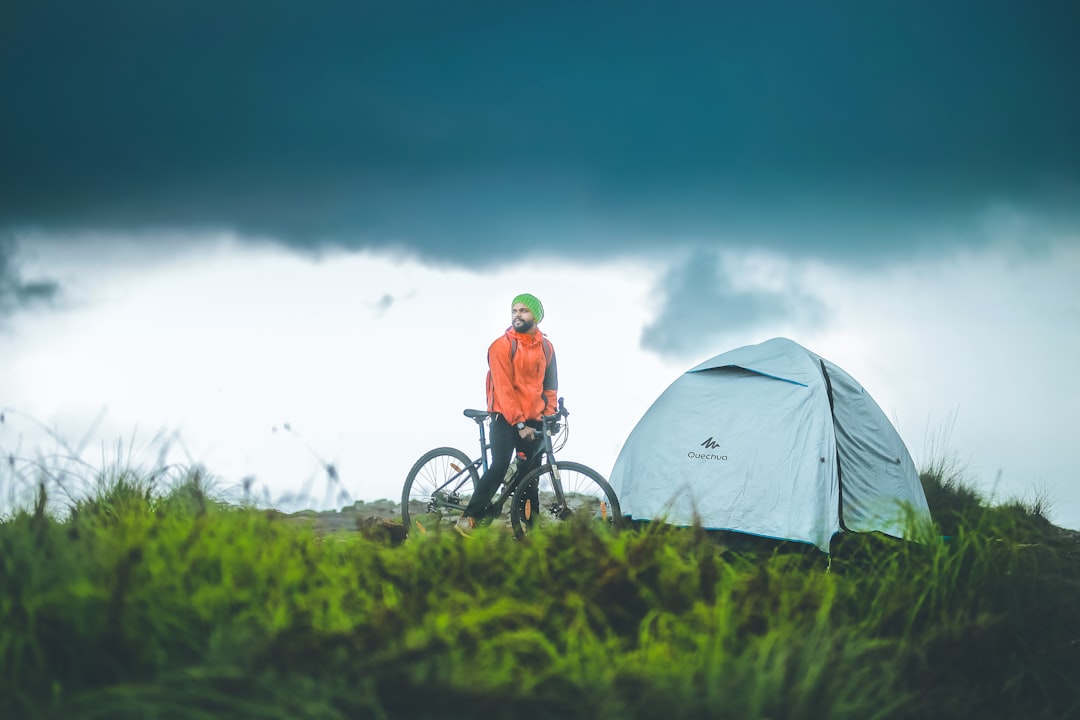
Regulators v/s Conformers
Regulators::
Some organisms are able to maintain homeostasis by physiological (sometimes behavioural also) means which ensures constant body temperature, constant osmotic concentration, etc.
- Regulators: All birds and mammals.
- Regulators:Very few lower vertebrate and invertebrate species
- Ex.: freshwater fish maintains a stable internal concentration of solutes in its blood that is higher than the water in which it lives.

‘Success’ of Mammals'
Why a highly variable external environment should bother organisms after all ?
Relatively constant internal (within the body) environment permits all biochemical reactions and physiological functions to proceed with maximal efficiency and thus, enhance the overall ‘fitness’ of the species. Evolutionary biologists believe that the ‘success’ of mammals is largely due to their ability to maintain a constant body temperature and thrive whether they live in Antarctica or in the Sahara desert
* * *

‘No organism is a perfect regulator or conformer.'
Regulating and conforming are two extremes in how animals deal with environmental fluctuations.
An animal may maintain homeostasis while regulating some internal conditions and allowing others to conform to the environment. For example, most freshwater fishes regulate their internal solute concentration but allow their internal temperature to conform to external water temperature.
* * *

Many ectotherms can thermoregulate by behavioral means, such as basking in the sun or seeking out shade. In general, ectotherms tolerate greater variation in internal temperature than do endotherms. Ectotherms do not necessarily have low body temperatures. While sitting in the sun, many ectothermic lizards have higher body temperatures than mammals. that is why, Biologists avoid the terms cold-blooded and warm-blooded because they are so misleading.

Endothermy and ectothermy are not mutually exclusive thermoregulatory strategies. A bird is an endotherm but may warm itself in the sun on a cold morning, just as a lizard does.Endothermy has several important advantages. Being able to generate a large amount of metabolic heat enables endotherms to perform vigorous activity for much longer than is possible for most ectotherms. Sustained intense exercise, such as long-distance running or powered flight, is usually only possible for endotherms.
NCERT Excerpt
During the course of evolution, the costs and benefits of maintaining a constant internal environment are taken into consideration. Some species have evolved the ability to regulate, but only over a limited range of environmental conditions, beyond which they simply conform.
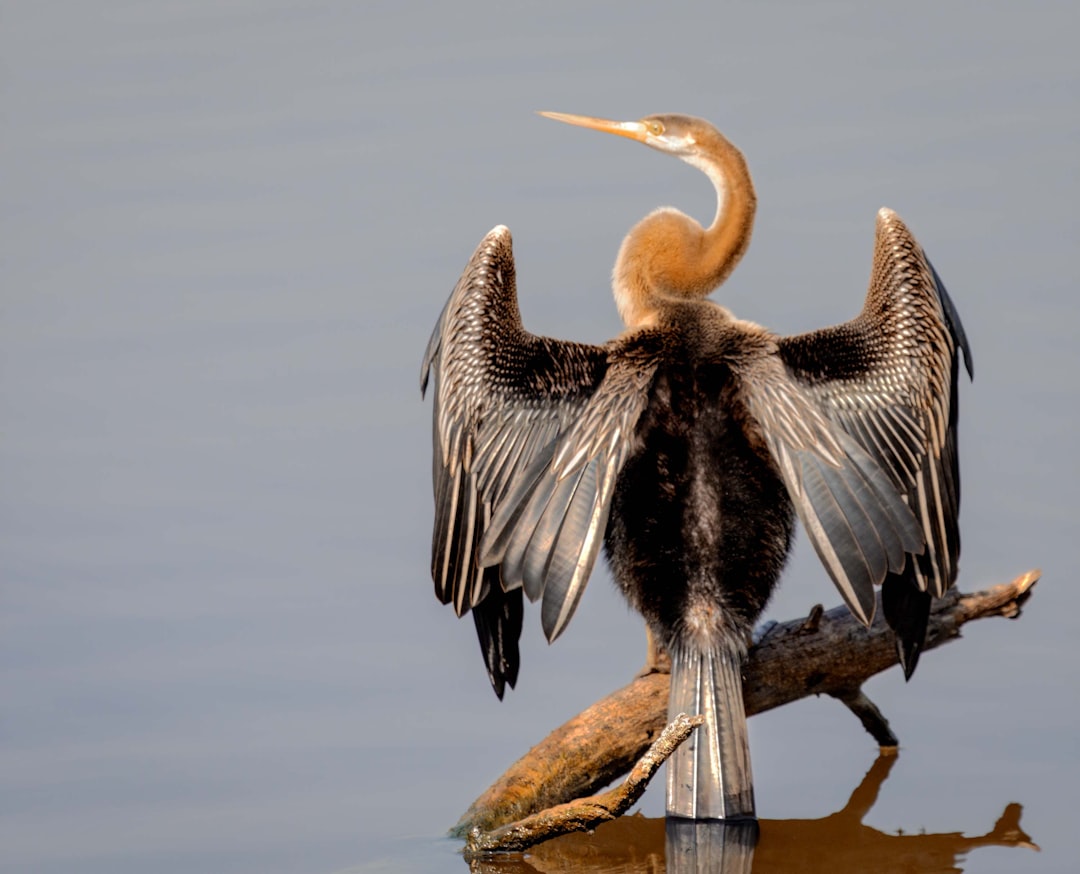
‘No organism is a perfect regulator or conformer.'
If the stressful external conditions are localised or remain only for a short duration, the organism has two other alternatives for survival.
Migrate : The organism can move away temporarily from the stressful habitat to a more hospitable area and return when stressful period is over. Every winter the famous Keolado National Park (Bharatpur) in Rajasthan host thousands of migratory birds coming from Siberia and other extremely cold northern regions.
* * *

‘No organism is a perfect regulator or conformer.'
Suspend: In bacteria, fungi and lower plants, various kinds of thickwalled spores are formed which help them to survive unfavourable conditions – these germinate on availability of suitable environment.
In higher plants, seeds and some other vegetative reproductive structures serve as means to tide over periods of stress besides helping in dispersal – they germinate to form new plants under favourable moisture and temperature conditions. They do so by reducing their metabolic activity and going into a state of ‘dormancy’.
* * *
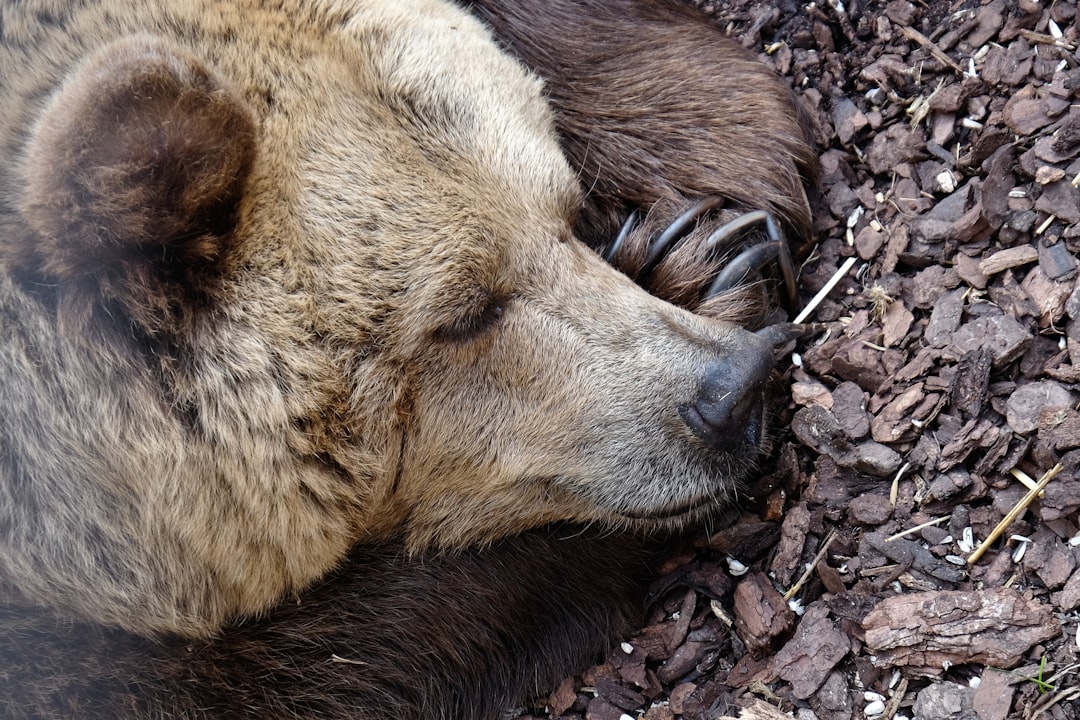
Escaping in time.
In animals, the organism, if unable to migrate, might avoid the stress by escaping in time.
- hibernation: The familiar case of bears going into hibernation during winter is an example of escape in time.
- aestivation:Some snails and fish go into aestivation to avoid summer–related problems-heat and dessication.
- diapause: Under unfavourable conditions many zooplankton species in lakes and ponds are known to enter diapause, a stage of suspended development..
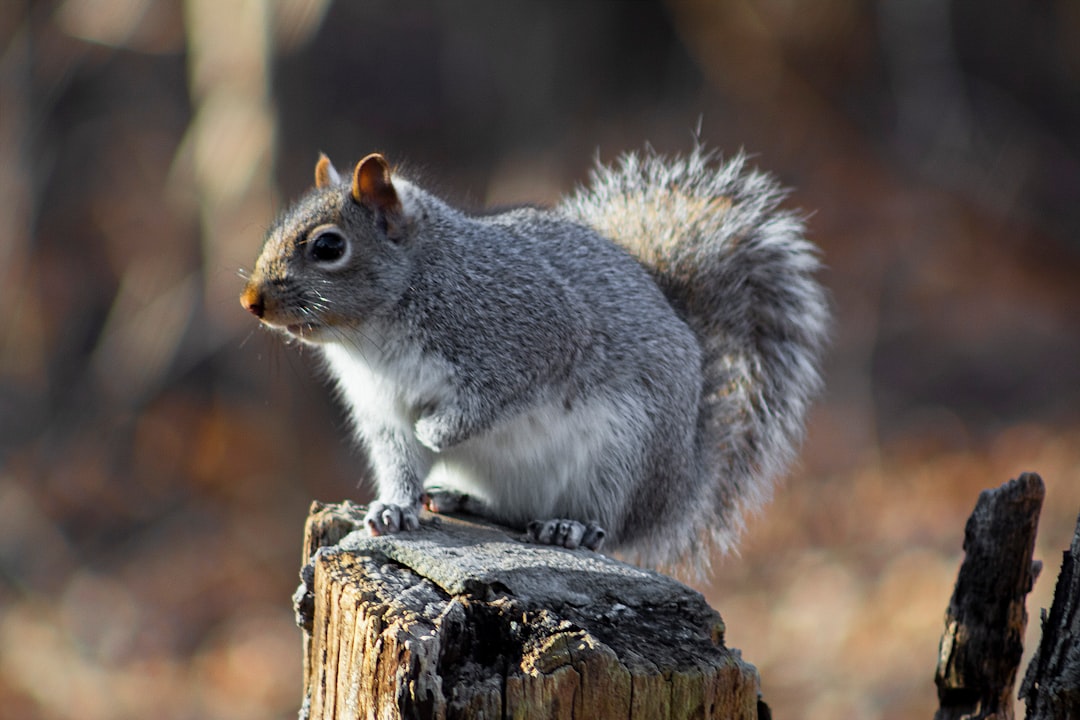
‘Hibernation'
long-term torpor that is an adaptation to winter cold and food scarcity.
When vertebrate endotherms enter torpor or hibernation, their body temperatures decline. Some hibernating mammals cool to 1–2°C, and a few drop slightly below 0°C in a supercooled, unfrozen state. Metabolic rates during hibernation may be several hundred times lower than if animals tried to maintain normal body temperatures. Hibernators can survive for very long periods on limited supplies of energy stored in body tissues or as food cached in a burrow.
Some hibernators prepare for winter by storing food in their burrows or by eating huge quantities of food. Ground squirrels double their weight prior to hibernation.
* * *

‘Estivation'
summer torpor, is also characterized by slow metabolism or inactivity.
Estivation allows animals to survive long periods of high temperatures and scarce water supplies..
Some snails and fishes
* * *
Thermoregulation
is energetically expensive for many organisms. This is particularly true for small animals like shrews and humming birds. Heat loss or heat gain is a function of surface area. Since small animals have a larger surface area relative to their volume, they tend to lose body heat very fast when it is cold outside; then they have to expend much energy to generate body heat through metabolism. This is the main reason why very small animals are rarely found in polar regions

‘Daily torpor'
Many small mammals and birds exhibit a daily torpor that is adapted to their feeding patterns.
- 1: Most bats and shrews feed at night and go into torpor during daylight hours.
- 2:hummingbirds feed during the day and go into torpor on cold nights. The body temperature of a hummingbird may drop by 25–30°C at night.
- 3.: freshwater fish maintains a stable internal concentration of solutes in its blood that is higher than the water in which it lives.
* * *
Adaptation
is any attribute of the organism
(morphological, physiological,
behavioural) that enables the organism to survive and reproduce in its
habitat.
is any attribute of the organism (morphological, physiological, behavioural) that enables the organism to survive and reproduce in its habitat.
Kangaroo Rat
- Adoptation in Kangaroo rat for conservation of Water
- Internal fat oxidation for Water
- Physiological adaptations result in conservation of water
- Highly specialized kidneys concentrate their urine up to five times that of man. Urine
- Found in North American Deserts cope with the daytime heat by remaining underground where it is cool and moist in their burrows.
- Kangaroo rats are highly adapted structurally, physiologically, and behaviorally
- Kangaroo rats also have decreased ventilation in their lungs which reduces water loss.
- Use their lower incisors to strip away the top layers of shrub leaves to get to the most succulent inner layers from which they obtain water

Xerophytic Adaptation
Thick cuticle, stomata arranged in deep pits (sunken), special photosynthetic pathway (CAM) that enables their stomata to remain closed during day time. Some desert plants like Opuntia, have no leaves – they are reduced to spines– and the photosynthetic function is taken over by the flattened stems

seals
have a thick layer of fat (blubber) below their skin that acts as an insulator and reduces loss of body heat.Marine mammals have a very thick layer of insulating blubber just under their skin. The skin temperature of a marine mammal is close to water temperature. However, blubber insulation is so effective that marine mammals can maintain body core temperatures of 36–38°C.
Acclimatization
Many animals can adjust to a new range of environmental conditions by a physiological response called acclimatization. that enables the organism to survive and reproduce in its
habitat.
Many animals can adjust to a new range of environmental conditions by a physiological response called acclimatization. that enables the organism to survive and reproduce in its habitat.

What is Altitude sickness ?
Its symptoms include nausea, fatigue and heart palpitations. This is because in the low atmospheric pressure of high altitudes, the body does not get enough oxygen. But gradually person get acclimatised and stop experiencing altitude sickness.
-
Acclimatization
1. The body compensates low oxygen availability by increasing red blood cell production. - 2. Decreasing the binding affinity of hemoglobin.
- 3.Increasing breathing rate.
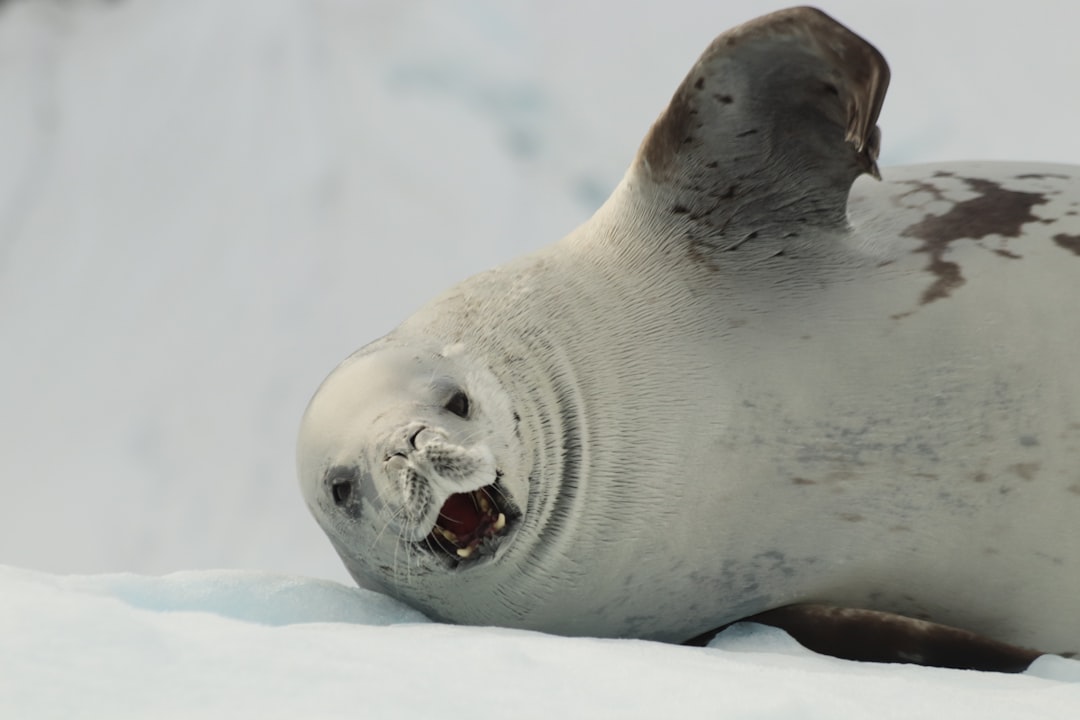
“Antifreeze” Compounds
Many fish thrive in Antarctic waters where the temperature is always below zero. How do they manage to prevent their body fluids from freezing?
Acclimatization in ectotherms involves compensating for temperature changes. Acclimatization responses in ectotherms often include adjustments at the cellular level. Cells may increase the production of certain enzymes or produce enzyme variants with different temperature optima. Membranes also change the proportions of saturated and unsaturated lipids to keep membranes fluid at different temperatures. Some ectotherms produce “antifreeze” compounds, or cryoprotectants, to prevent ice formation in body cells.
The extra solutes which prevent freezing are glycerol and antifreeze proteins. They lower the freezing point of body fluids. Antarctic Fish (Trematomus) remains active even in extremely cold sea water due to this hardiness.
* * *
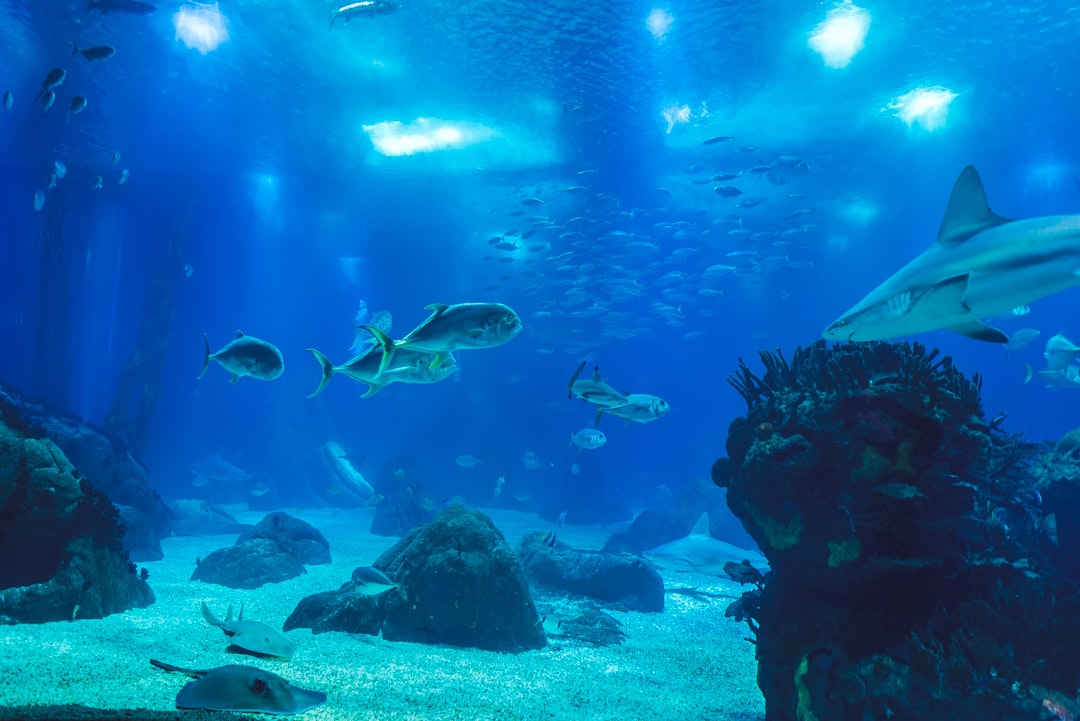
“Piezolytes”
A large variety of marine invertebrates and fish live at great depths in the ocean where the pressure could be >100 times the normal atmospheric pressure that we experience. How do they live under such high pressures and do they have any special enzymes?
Creatures that live in the deepest parts of the ocean have special features, which help them deal with these tough conditions – including the crushing pressure To help with this, deep sea creatures have “piezolytes” – small, organic molecules which have only recently been discovered. These piezolytes stop the other molecules in the creatures’ bodies, such as membranes and proteins, from being crushed by the pressure Microbes have been recovered from the very bottom of the deep sea, and they have peizolytes to help protect them, too.
* * *